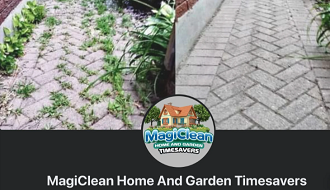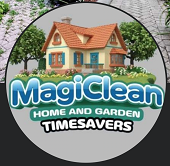Swedish Seaweed Shoots into House – The Unconventional Gardener
Header picture: SubOrbital Specific-4 launched from Sweden at 6am on 26 November 2024. Picture credit score: SSC
On Tuesday 26 November, SubOrbital Specific-4 launched from SSC’s Esrange house centre in Sweden carrying six science tasks, certainly one of which investigated the impact of microgravity on seaweed.
The “Baltic Fucus in House” experiment concerned tissue samples from bladderwrack (Fucus vesiculosus) floating in 16 tubes of brackish water.
Bladderwrack is a brown perennial macroalgae widespread each on the tidal coasts of the North Atlantic and within the Baltic Sea. Over the past 7000 years it has tailored to low salinity and tidal situations, reproducing by way of a synchronised launch of eggs and sperm into the water, the place fertilisation takes place.
Analysis within the early Nineteen Nineties steered that this reproductive cycle is linked to the phases of the Moon. It might be straightforward for bladderwrack within the Atlantic Ocean to maintain monitor of the lunar cycles by way of the tides, as throughout low tide the seaweed is uncovered to the air and dries out. As soon as the tide rises once more, the bladderwrack releases its eggs and sperm into the water. Nevertheless, the Baltic Sea doesn’t have any tides. So how does the bladderwrack within the Baltic Sea synchronises its replica with the lunar cycle?
One concept is that the Moon’s gravitational pull impacts the microalgae, and the best way to check it’s to ship the seaweed to house, the place it experiences microgravity.
Tant Tång

Lena Kautsky is thought “Aunt Seaweed” (Tant Tång in Swedish). Now Professor Emeritus of Marine Plant Ecology at Stockholm College, she has devoted her skilled life to researching the Baltic Sea, particularly the ecology of the bladderwrack neighborhood.
Throughout an look on Swedish public radio, Prof Kautsky talked about that sending seaweed into house to check the idea can be a enjoyable venture. Gunnar Florin on the Swedish House Company acquired in contact to say that house was obtainable on a sounding rocket – a proposal too good to refuse.
“It felt completely incredible to have the chance to check one thing that we have now been desirous about for the reason that discovery that bladderwrack replica appears to be affected by the moon’s gravitational pull. In fact, it was an enormous sure!”
Lena Kautsky
So Prof Kautsky and her analysis accomplice Ellen Schagerström designed an appropriate experiment.
“We are going to check whether or not bladderwrack is an efficient house traveller by seeing the way it copes with main adjustments in gravity. We additionally need to develop the methodology of retaining small shoots of bladderwrack in a small quantity of water. The plan is to then write a analysis software to have the ability to ship fertile bladderwrack to the Worldwide House Station (ISS) and discover out whether or not it’s the moon that controls the discharge of eggs and sperm within the Baltic Sea’s bladderwrack.”
Lena Kautsky

The analysis workforce constructed a small field to include small tubes full of brackish water and small seaweed shoots collected from across the Askö Laboratory, south of Stockholm. The shoots have been stored in managed gentle and temperature situations on the lab and loaded into the field simply earlier than the launch.
“Constructing a small field that can go up in a rocket has actually been a bunch effort. We have now been fortunate to obtain beneficiant assist from each skilled house technicians, analysis engineers and useful folks to place collectively two packing containers, one for the rocket and one as a management, for the experiment. We have now checklists for a way the samples must be dealt with each earlier than and after the house flight. Now we glance ahead with excited anticipation to November and the launch.”
Ellen Schagerström
On SubOrbital Specific-4, the seaweed shoots reached an altitude of 256 kilometres and skilled six minutes of microgravity. Now a researcher on the College of Helsinki will examine how the seaweed’s genetic materials (RNA) has been affected by its journey, by evaluating it with samples that remained on Earth.
References
SubOrbital Specific-4 launched from Esrange, 26 November 2024.
Six science tasks to house from Sweden, 14 November 2024.
Bladderwrack to be despatched into house, 12 June 2024
Except in any other case acknowledged, © Copyright Emma Doughty 2024. Printed on theunconventionalgardener.com.
In the event you loved this submit, please think about supporting my work. I’ve a subscriber-only Patreon for house plant fanatics, or you possibly can simply purchase me a cup of tea:
Many thanks!



















